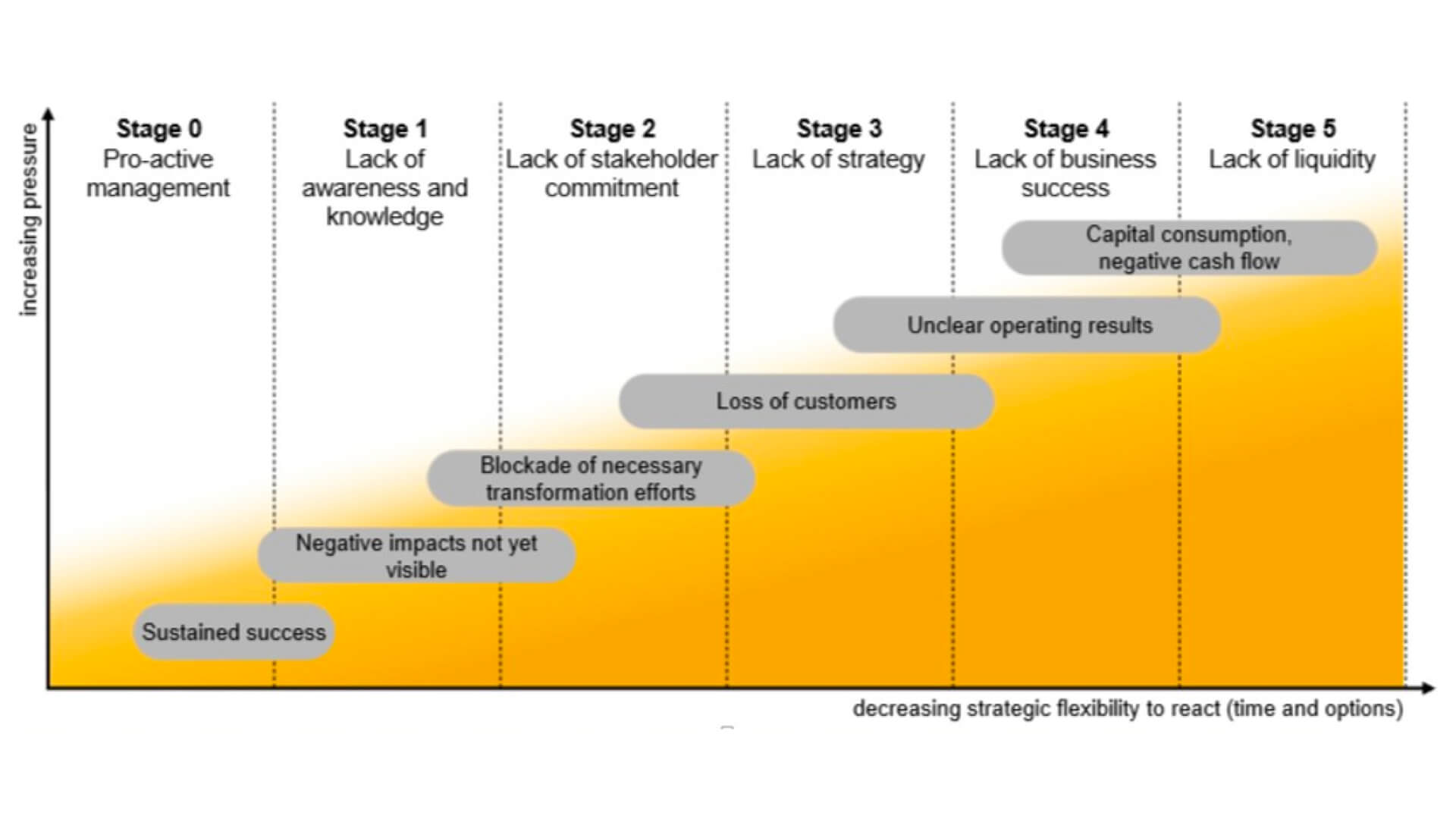Transformation Stages
At a gathering with the theme of business transformation, a delegate said; “Transformation never truly can work. Take a gander at me: I am fat, however that is me, it is a piece of my personality, and I get along fine. There are blemishes yet we need to live with them.”
On the off chance that you consider this there is a point we all have some sort of flaw and we live with it, however the reason he or we are not willing to change is on account of the weight is not sufficiently high yet.
If business transformation is introduced (usually when a crisis occurs), it is too late to restore the health of the company fully.

So when it is the right time?
Stage 0: Pro-active management and Transformation according to external factors
Indicators:
- Observation and change in view of market trends, economic, societal and environmental developments
- High flexibility in terms of time and options as well as low pressure to company
Stage 1: Lack of awareness and transparency
Indicators:
- Lack of knowledge and transparency for transformation need creates basis for future problems like a lack of stakeholder commitment.
- However, negative impacts not visible yet.
Stage 2: Lack of stakeholder commitment
Indicators:
- Stakeholders are not visible and lack of stakeholder commitment can result in wrong personnel choices for key positions
- Personal circumstances and conflicts at the management level can lead to the blockading of necessary transformation initiatives.
- However, no business impact yet.
Stage 3: Lack of transformation strategy
Indicators:
- Company starts losing customers due to lack of necessary transformation
- Decrease in turnover, increase in inventory and stocks
- Decomposition of overtime and short-time work
- High Backlog for workforce or financial resources through failure to invest or false investments.
- Dissatisfaction and loss of key employee can also be result – loss of core know-how
Stage 4: Lack of business success
Indicators:
- Unclear operating results – total costs are not covered (still positive profit contribution)
- Ongoing lack of positive business results weakens execution power of leadership teams
- Important problems are ignored or varnished
Stage 5: Lack of liquidity
Indicators:
- Capital consumption and negative cash flow
- Entrance to bankruptcy (variable costs are not covered – negative profit contribution)
- The company culture as an important system of common values often gets destroyed
Which transformation stage you are in?
(Inspired by Book “Business Transformation Management Methodology”, Uhl, Axel; Lars Alexander Gollenia)
Written by Shekhar Bhartiya
